4B students Roni Haravon, Justin Ng, and Marco Chow recently won 3rd place in an international competition for their design of a Future Library.
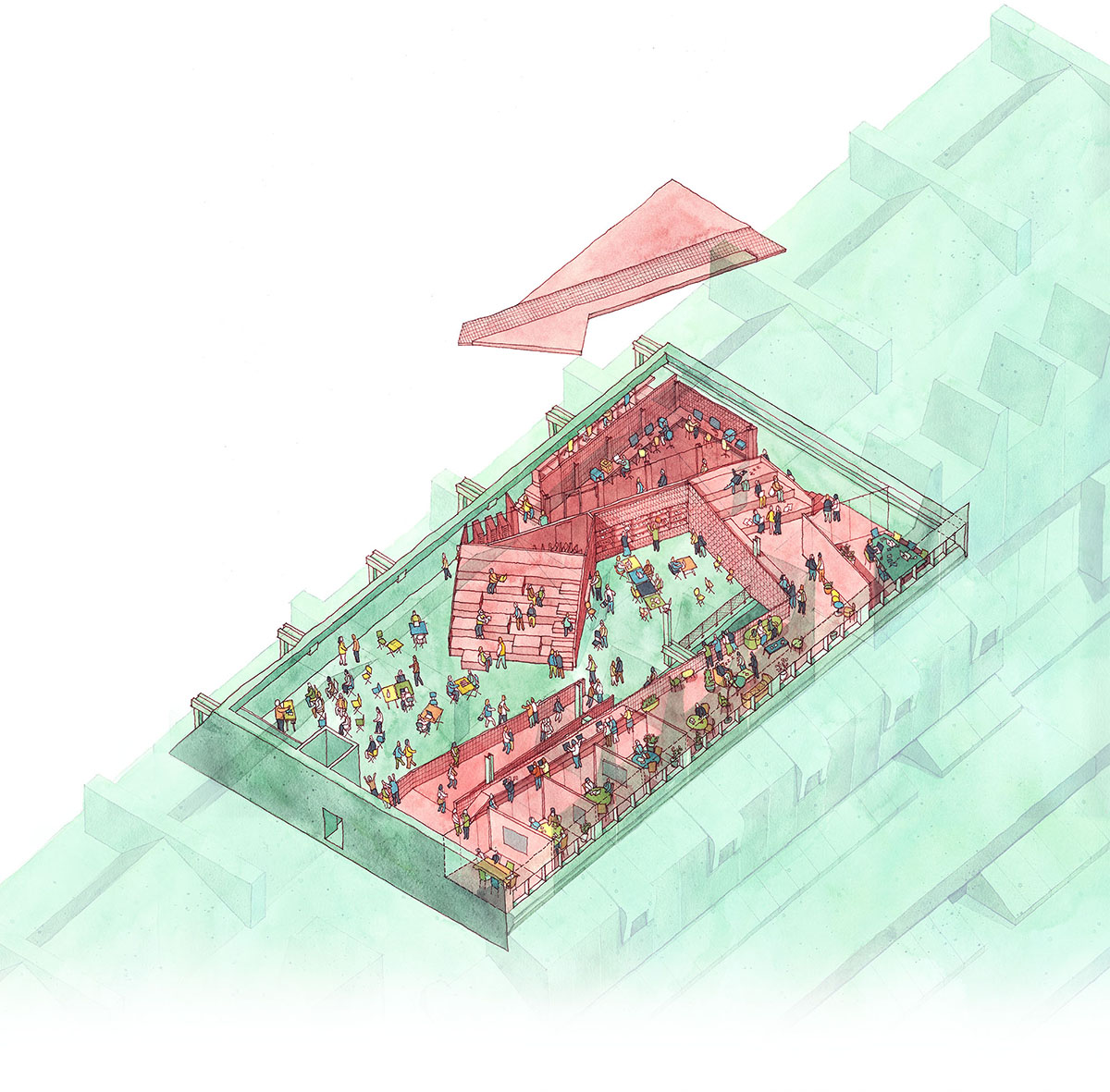
Sharing is Caring
More than the protection and collection of information, libraries are vanguards in the culture of sharing – of books, knowledge, space… As public buildings, their existence is predicated upon the notion that the act of sharing promotes democracy, solidarity and simple fellow-feeling. While the internet has unbinded information from the pages of books, without the physical environment as a common reference frame that enables the full bandwidth of human communication, it is difficult to build real connections and engage in fulfilling discourse. Therefore, rather than a surrogate, we see the internet as supplementary to libraries.
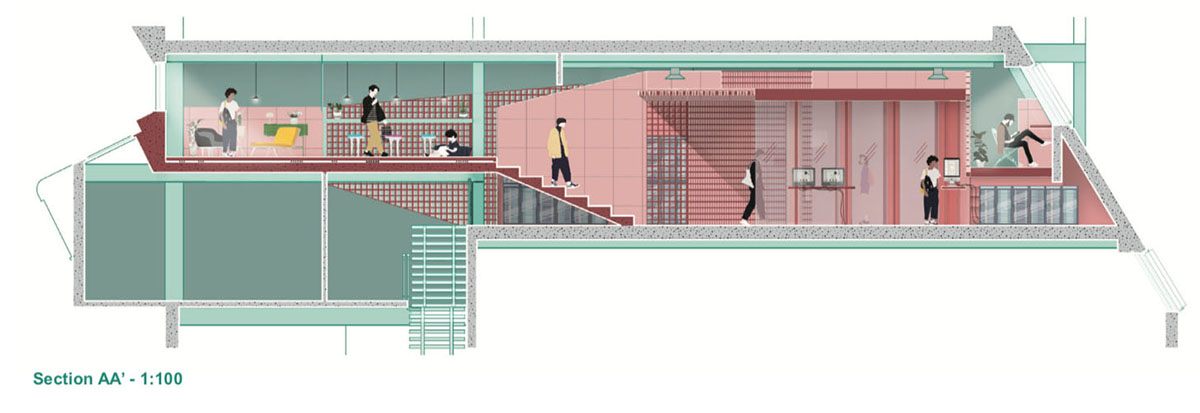
Freed from books, a library becomes a place of exchange, a shared public square connected to the internet. While it wants to be a freespace – akin to the all-powerful Supersurface – that enables a wide range of social interactions, the reality is that this sort of freedom and flexibility comes with the need for auxiliary (storage) spaces. At the same time, while access to the internet appears intangible, it is far from metaphysical. Behind each seemingly virtual action are servers and electric cables that demand physical presence.

The need for auxiliary spaces and the desire for freespace results in two contrasting spatial typologies within a single project. The infrastructure that enables sharing (such as storage and servers) are packed into an architecturally-dense mass. A 3D-printing and computer lab is also placed in this mass. Rather than hiding the mass, the library – just as the Valletta Puggia shows off technology – embraces its presence and exposes its interior. The mass’ geometry then choreographs a series of fixed lounge and gathering spaces. The remaining space is left empty to operate as a flexible organism that generates endless layouts that enable a range of social activities.
The confluence of the choreographed mass and the free plane produces a provocative interface between highly scripted and unscripted interactions. It is here that library-goers access the different storage systems. Altogether, the library becomes an architecture that celebrates the experiences of sharing a space.
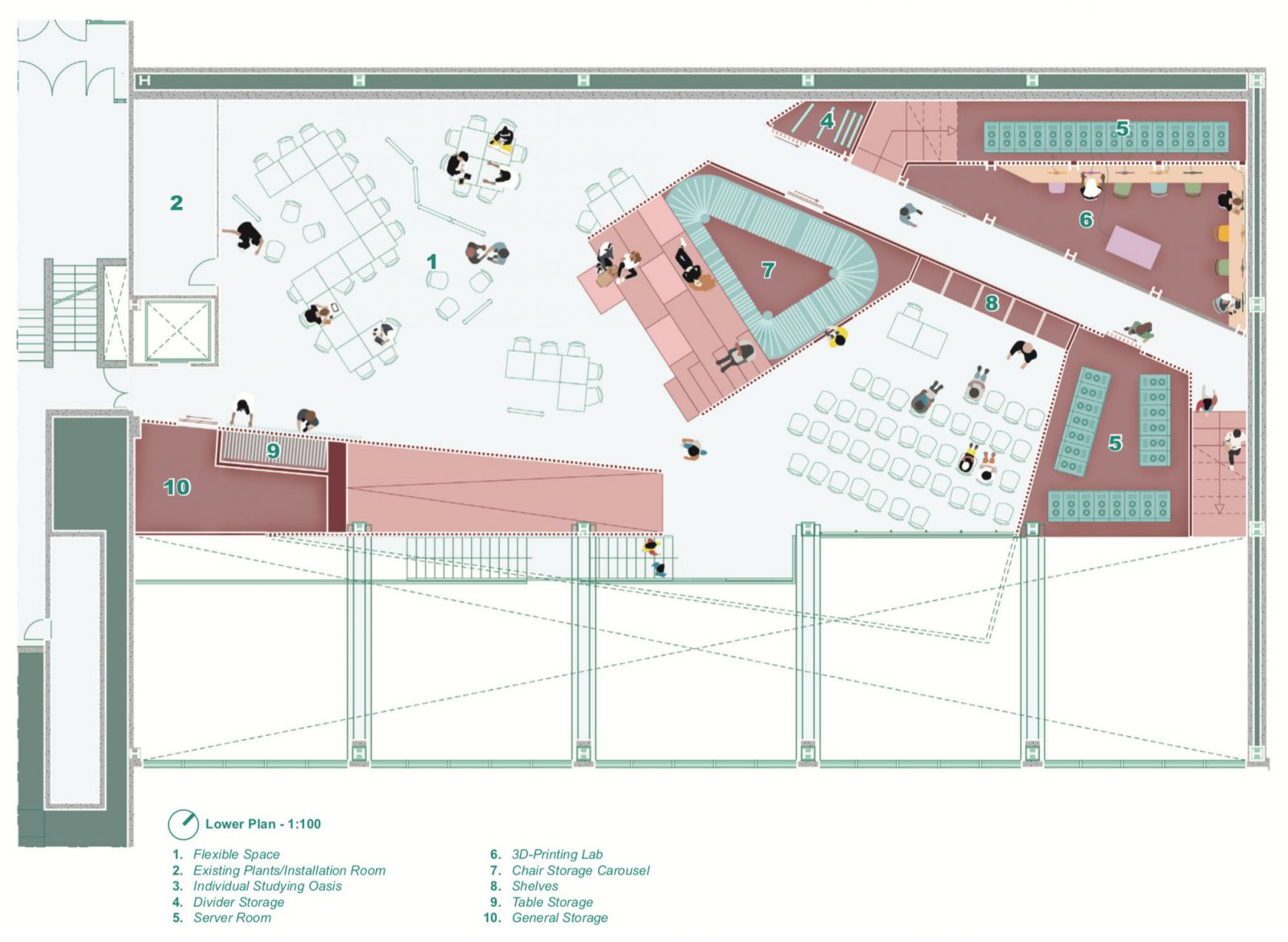
The Mass
The volume that houses the auxiliary spaces is the Mass, conceived as an antonym to the Cloud. Unlike the Cloud, the Mass is boastfully grounded and visible. Its angular geometry reduces the depth of the spaces inside while increasing its surface area to make the storage spaces more usable and accessible. While much of it is for storage, the Mass’ spatiality is made pertinent when library-goers descend into the Mass and access a 3D-printing lab flanked by server rooms. The resulting geometry also choreographs a series of fixed lounge and gathering spaces above itself.
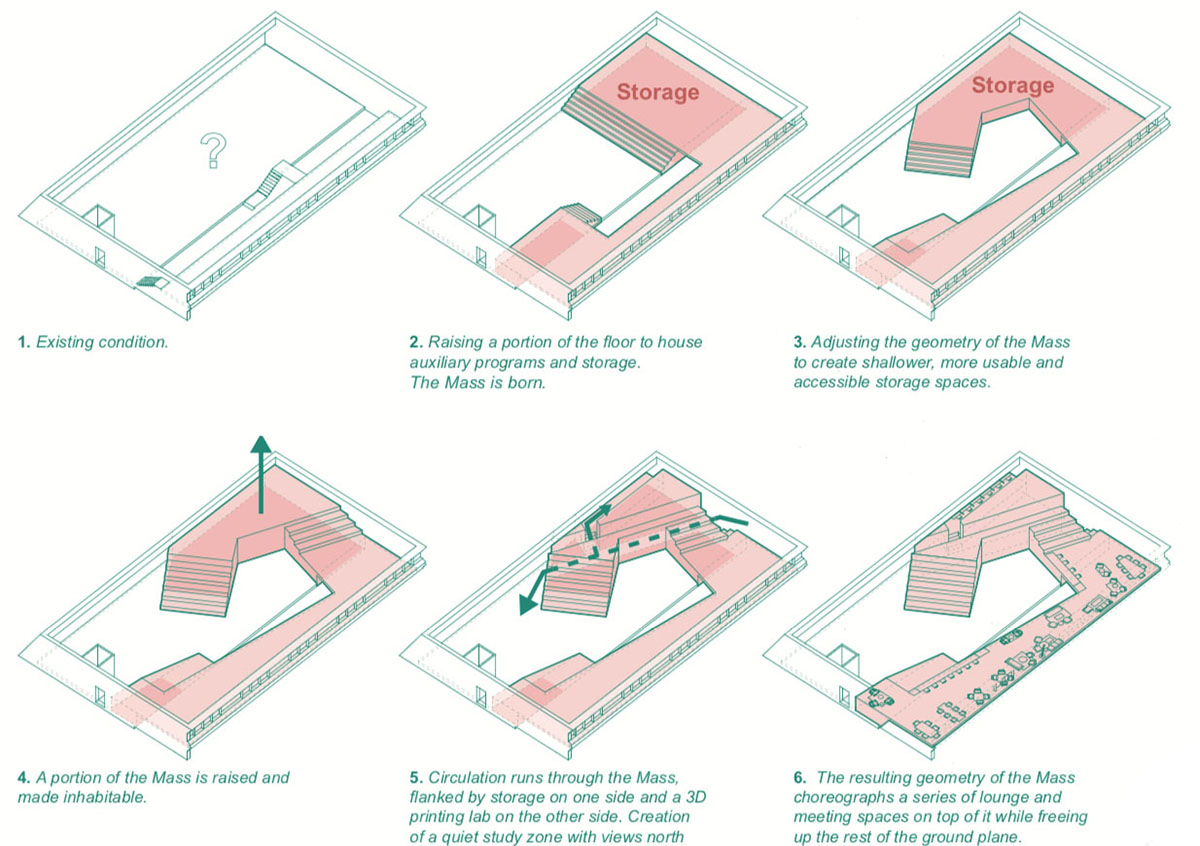
Storage System
While all the furniture on the Mass is fixed, the rest of the furniture is movable and easily stored away. The tables and chairs in the flexible space are light and foldable. The tables are stored near the elevator, where library-goers can slot their table into the Mass. Meanwhile, the chairs are stored on a carousel underneath the Mass’ large steps, where users can start or pause the carousel to pick up or return a chair. Several dividers are also stored in the Mass with privacy is needed.
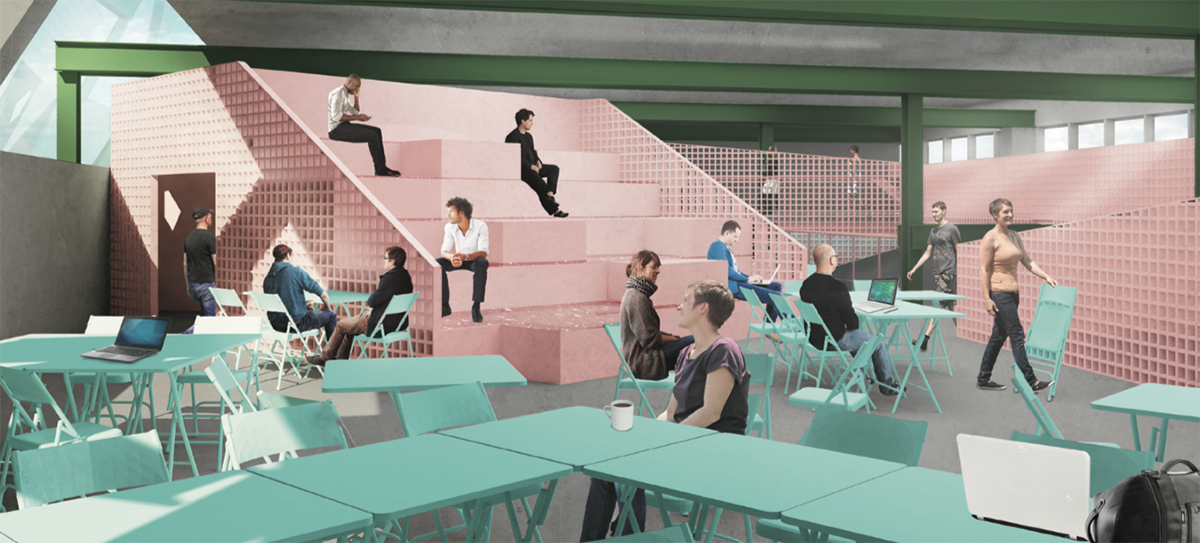
Materials
Moore’s law observes that data storage density doubles every two years, therefore, the amount of physical infrastructure needed for data storage is bound to change. For ease of contraction (or perhaps expansion?), the Mass is conceived as a light steel structure. Its sides are clad with Fiberglass reinforced plastic grating that allows library-goers to peek inside the belly of the Mass while also being insulated from electricity.
The rest of the library is gutted and the concrete structure is exposed. No fake floor, no electrical sockets, no paint.
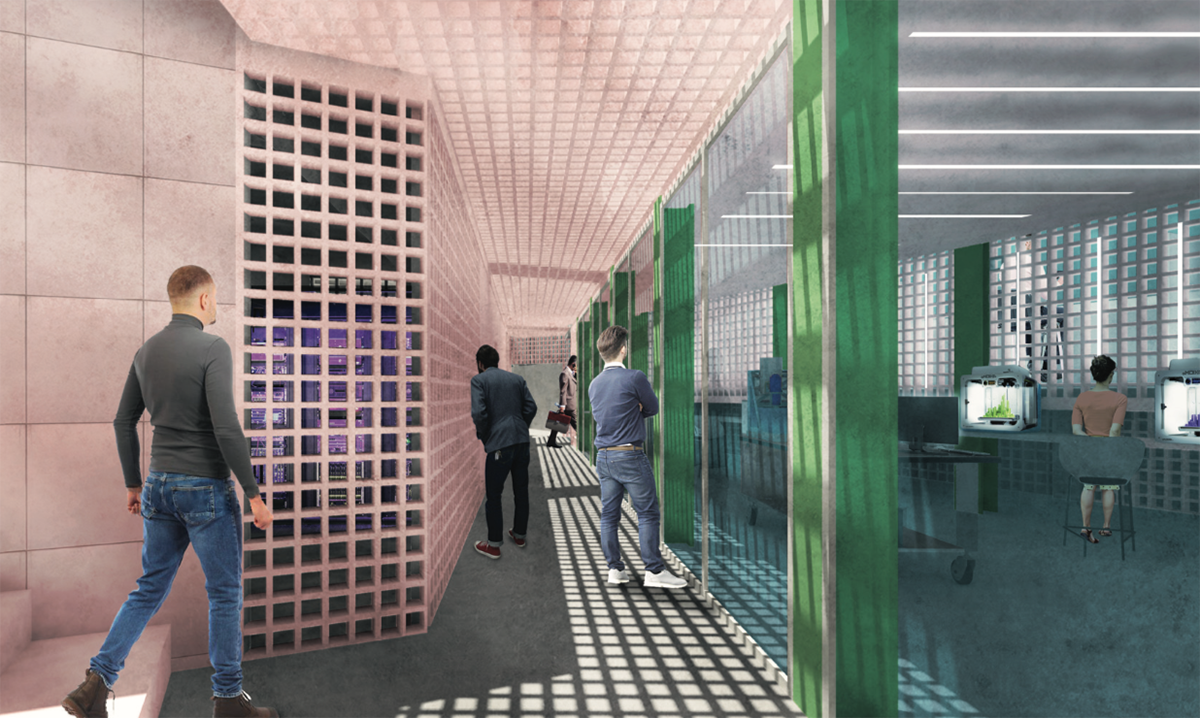
See the competition panel here.




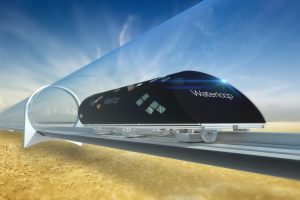
Leave a Reply